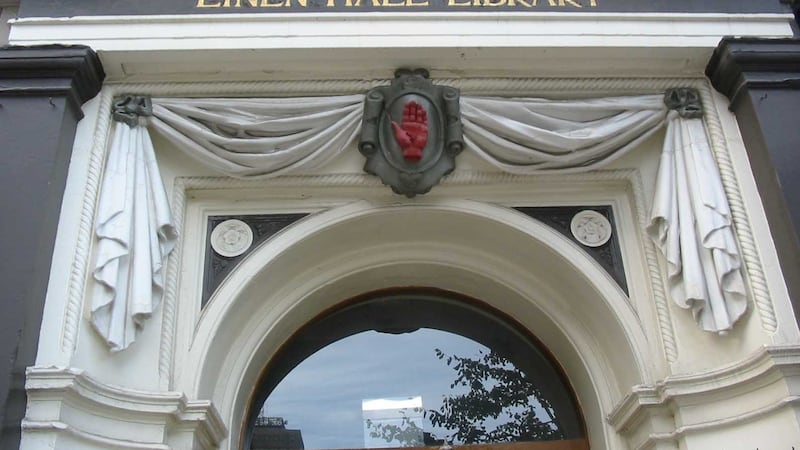EVEN in a place where the past all too often overshadows the present, it can be easy to overlook the intensity and speed of the enormous changes that happened in the Ireland of just over a century ago.
In a turbulent period of around just 10 years, we swept from the third Home Rule crisis and the First World War to the War of Independence, the Irish Civil War and the creation of Northern Ireland.
The story of that defining slice of our history is vividly recounted in a new book which focuses on what it meant for County Armagh.
Authors Eoin Magennis and Donal Hall say that Armagh: The Irish Revolution, 1912-1923 is the first major history covering the landmark events which have been commemorated during the ‘decade of centenaries’.
“Our aim with the book is to take a wide view of the social, economic and political changes that occurred in the county,” explains Magennis.
“At the same time we could not ignore how the county was one of the more controversial theatres of military violence during the decade after 1912.”
Co Armagh had a long tradition of what was called “party violence”. Sectarian disputes erupted over territory, marching and the Home Rule debates.

As Magennis says, “sectarian clashes were common enough as was the tendency to fire shots during these”.
“Armagh was certainly spared the levels of violence seen in Belfast during the Troubles of 1919-1922, but dozens of people in the county still ended up dead or injured,” he explains.
“The 12 months to June 1922 were especially violent with more than 26 men and women killed and a similar number wounded.
“The derailing of a troop train at Adavoyle (the subject of the book cover) and the shooting dead of six civilians in Lisdrumliska and Altnaveigh are probably best known.
“The latter killings were among the acts that the Mullaghbawn native, John McCoy, later reflected ‘could profitably be forgotten’.
“During our research we found, instead, that the dead continue to be commemorated by families and communities, as well as army regiments in England.”

Magennis points out that this decade is often described as being “the years of the Irish Revolution”. There was an emerging political voice for women and labour, though any gains beyond the vote were rolled back after 1925.
When the Boundary Commission held meetings in Co Armagh in 1925, nationalists were divided between those who were hopeful of a positive outcome and those who argued that its deliberations should be ignored. Indeed, the Nationalist party MP dismissed it as ‘eyewash for a deluded people’
A different revolution in land ownership did last. This had begun before 1912 and would continue through the decade: “Big houses remained a feature in the county, but 215 landed estates were sold to more than 12,000 tenants, revealing the extent of land hunger in Armagh.”
The decade also brought political changes. Magennis argues that Armagh unionists “very slowly adopted the idea that the exclusion or partition of six counties was an end in itself and no longer the means of stopping Home Rule”.
“Some Armagh politicians, like the Westminster MP Sir John Lonsdale and a small number of councillors in Lurgan and Portadown, had grasped this idea by 1916,” he says.
“However, the broader unionist population moved gradually to the same point. It would be 1921 before there was a belief that a Northern Ireland state could be the source of their deliverance or security. Thousands would then enrol in the A, B and C Specials after November 1920 to make this so.”
For nationalists and republicans in Armagh it was a case of a revolution missed. The book provides important detail on the occasional successes, perhaps most famously the election of Michael Collins as an Armagh MP in May 1921.
- Haunting terror of Altnaveigh Massacre lives on in infamyOpens in new window
- When an 'Ulster Month' lasted just 24 hours - a decisive day in Ulster politicsOpens in new window
- Partition: WT Cosgrave talked about united Ireland but wasn't serious about interests of northern nationalistsOpens in new window
Collins’s starring role at a political meeting in Armagh city in September 1921 provides two of the key illustrations in the book.
There are also the many failures and divisions. Magennis argues that, “while unionists gathered around a strategy, nationalist divisions never healed”.
“Two camps – those loyal to the Irish Parliamentary Party and its Hibernian allies and those who favoured the new Sinn Féin – clashed repeatedly and violently after 1916,” he says.
“A third camp would emerge in 1922 out of the Treaty debates which probably further weakened the opposition to unionism.
“No one group dominated nationalist politics in Armagh in this period and there was little consensus. For example, when the Boundary Commission finally held meetings in Co Armagh in 1925, nationalists were divided between those who were hopeful of a positive outcome and those who argued that its deliberations should be ignored. Indeed, the Nationalist party MP dismissed it as ‘eyewash for a deluded people’.”
Magennis notes that the story of Co Armagh during the Irish Revolution is untypical of most counties.
“We have been able to build upon the work of local historians with the availability of new sources and the inclusion of different voices in the narrative,” he says.
“We hope this is a fresh version of events which allows Armagh to take a rightful place alongside the other Ulster titles in this series and the volume of work published during the decade of centenaries”.






